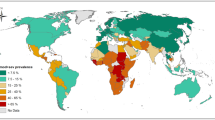Abstract
Gender- or caste-based segmentation within the informal sector economy is a well-documented phenomenon. However, no systematic study exists on the subject of spatial segmentation in the urban informal market. Considerations on disparity levels—usually the chief motivation behind studies on caste or gender—are not paramount here; our prime concern involves rather the mechanisms leading (or not) to such a segmentation within a small sector of the urban economy. Also, the main aim of this paper is not so much to find out if there is spatial segmentation but to identify the underlying causes behind the entry into the market. The street food market is selected as field of study because of the strong cultural identity associated with food. A primary survey with 185 samples was conducted in New Delhi. Sampling was done purposively for nine large markets and within the market; all vendors of selected food items were surveyed. Although a structured questionnaire is in the survey, a large part of the processes aiming at understanding the phenomenon were based on qualitative interactions with the responders rather than strictly quantitative information. The major findings of the study show a strong regional identity imbued in the food. Stream migration from particular regions to New Delhi is identified as the driving force behind the segregation found in the food market and between food vendors. Further probing shows that the vendors’ entry into the market is done on the basis of social contact between related individuals and social groups, which includes financial aid to the new arrivals; the mechanism lying behind occupational segregation in the informal labour market is also shown.
Access this chapter
Tax calculation will be finalised at checkout
Purchases are for personal use only
Similar content being viewed by others
Notes
- 1.
A thin oval pancake prepared from a fermented batter of rice and black gram. Arguably, the dish originated from Udupi, Karnataka, and is popular in the South Indian cuisine.
- 2.
A steamed bite-sized dumpling filled with vegetable or meat stuffing. It is originated from Nepal and was traditionally popular in Sikkim, North Bengal and Assam.
- 3.
Panipuri (also known as phoolki, golgappa, puchka) is a crispy ball made from wheat or semolina hollowed to fill a spiced potato mixture topped with tamarind water. This savoury dish originated in the Magadha region of South Bihar and is presently popular all across the country.
- 4.
Chole bhature is a combination of chole (parboiled chickpeas sautéed in spiced Indian masala) and fried bread made from refined flour; it is popularly eaten as breakfast in North-Western India.
References
Almeida ALO, Alves LF, Scott EMG (1995) Poverty, deregulation and employment in informal sector of Mexico, Education and Social Policy Department, World Bank
Anker R (1997) Theories of occupational segregation by sex: an overview. Int Labour Rev 136(3):315–339
Banerjee B (1983a) The role of informal sector in migration process: a test of probabilistic migration model and labour market segmentation in India. Oxford Econ Pap New Ser 35(3):399–422
Banerjee B (1983b) Social networks in migration process: empirical evidence on chain migration in India. J Dev Areas 17(2):185–196
Banerjee B, Knight J (1985) Caste discrimination in the India urban labour market. J Dev Econ 17(3):277–307
Bhattacharya P (1998) The informal sector and rural-to-urban migration: some Indian evidences. Econ Political Wkly 33(21):23–29
Dickens WT, Lang K (1988) The re-emergence of segmented labour market theory. Am Econ Rev 78(2):129–134
Fei JCH, Ranis G (1964) Development of the labour surplus economy: theory and policy. Richard A. Irwin Inc., Homewood, IL
Gupta I, Mitra A (2002) Rural migration and labour segmentation: micro level evidence from Indian slums. Econ Political Wkly 37(2):163–168
Harris JR, Todaro MP (1970) Migration, unemployment and development: a two sector analysis. Am Econ Rev 60(1):126–142
Khan AA (1982) Rural-urban migration and urbanization in Bangladesh. Geogr Rev 72(4):379–394
Kumar SV, Subbayamma G (2001) Social security for unorganized sector in India: a need for comprehensive reforms. Indian J Labour Econ 44(4):633–640
Ladent J (1982) Rural-urban migration, urbanization and economic development. Econ Dev Cult Change 30(3):507–538
Leontaridi MR (1998) Segmented labour market: theory and evidence. J Econ Surv 12(1):63–101
Lewis AW (1954) Economic development with unlimited supply of labour. The Manch Sch 22(2):139–191
Margolies L (1978) Rural-urban migration and urbanization in Latin America. Curr Anthropol 19(1):130
Nurkse R (1953) Problems of capital formation in underdeveloped countries. Oxford University Press, New York
Pais J (2002) Casualization of urban labour force: analysis in recent trend in manufacturing. Econ Political Wkly 37(7):631–652
Papola TS (2012) Social exclusion and discrimination in urban labour market. Working Paper No-2012/14. Institute for Studies of Industrial Development, New Delhi
Piore MJ (1983) Labour market segmentation: to what paradigm does it belong? Am Econ Rev 73(2):249–253
Sakamoto A, Chen MD (1991) Inequality and attainment in dual labour market. Am Sociol Rev 56(3):295–308
Shakthivel S, Joddar P (2006) Unorganized sector workforce in India: trend, pattern and social security coverage. Econ Political Wkly 41(21):2107–2114
Shaw A, Pandit K (2001) The geography of segmentation of informal labour market: the case of motor vehicle repair in India. Econ Rev 71(2):80–96
Unni J (2005) Wages and income in formal and informal sector in India. Indian J Labour Econ 48(2):311–317
Unni J, Rani U (2003) Social protection for the informal workers in India: insecurities, instruments and institutional mechanisms. Dev Change 34(1):127–161. https://doi.org/10.1111/1467-7660.00299
Zelinsky W (1971) The hypothesis of mobility transition. Geogr Rev 61(2):219–249
Author information
Authors and Affiliations
Corresponding author
Editor information
Editors and Affiliations
Rights and permissions
Copyright information
© 2020 Springer Nature Switzerland AG
About this chapter
Cite this chapter
Kundu, A., Dutta, S. (2020). Migration and Entry to Urban Street Food Market: A Study of Selected Street Food Vendors in Delhi. In: Bandyopadhyay, S., Pathak, C., Dentinho, T. (eds) Urbanization and Regional Sustainability in South Asia. Contemporary South Asian Studies. Springer, Cham. https://doi.org/10.1007/978-3-030-23796-7_4
Download citation
DOI: https://doi.org/10.1007/978-3-030-23796-7_4
Published:
Publisher Name: Springer, Cham
Print ISBN: 978-3-030-23795-0
Online ISBN: 978-3-030-23796-7
eBook Packages: Political Science and International StudiesPolitical Science and International Studies (R0)




